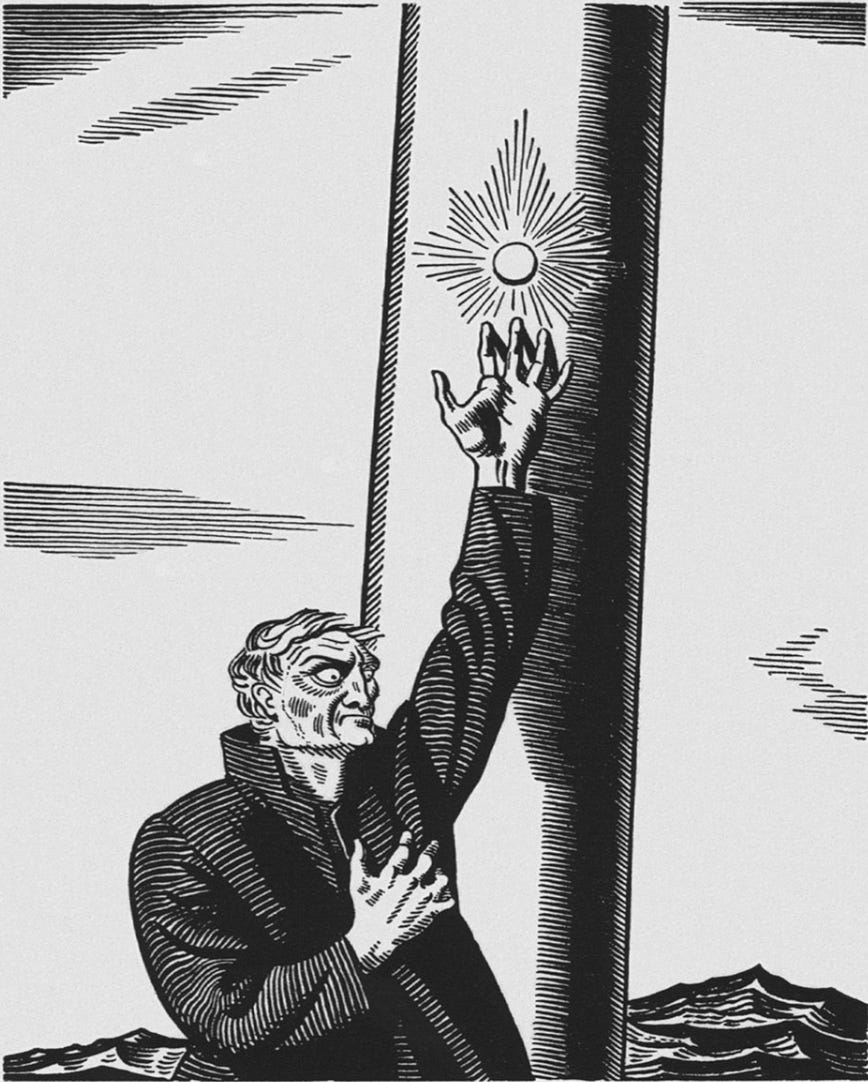“Hark ye yet again—the little lower layer. All visible objects, man, are but as pasteboard masks. If man will strike, strike through the mask! How can the prisoner reach outside except by thrusting through the wall? To me, the white whale is that wall, shoved near to me.
Hello and welcome to All Visible Objects, a blog devoted to research and investigations into Herman Melville and his novel Moby-Dick. Although I’m not technically a Melville scholar, nor an English PhD, nor could I reliably tell a sloop from a schooner, I am a professional researcher and I most certainly am obsessed with Moby-Dick and every topic that radiates outward from it like a shining doubloon nailed to its center.
My intent for this space is to give myself space to contribute long-form answers to uncommon but fascinating questions that can help us all better understand the book and its cultural significance. All that most maddens and torments; all that stirs up the lees of things; etc. etc. In many cases, I’ll be contributing my own new research to the field and in others simply gathering available (if obscure) answers and analyses that I find interesting. Although for many years now I’ve maintained a hobby of answering questions about the book on various corners of the internet, I wanted a dedicated space to apply the kind of rigorous research that I do for documentary filmmakers and podcasts to my own strange, nerdy interest.
As a sub-sub librarian at heart (and also a literal librarian by degree), I also hope to make the oceans of Melville and Moby-Dick scholarship accessible to all, while also showcasing the kinds of resources that are available to anyone with a question, a library account, and a bit of research elbow grease. Moby-Dick is unquestionably a complicated book, with more ideas and allusions than one could ever register on a single (or even multiple, or annual) reads. But in seeking out answers to my own questions since first reading it some years ago, I’ve found over and over that there is great reward in seeking out meaning in Melville’s frequently odd references and phrasings which, in the scheme of a 400+ page book, are easy to gloss over.
I’m also fascinated by the ways that Moby-Dick has become so subtly ubiquitous in our culture, present not just as a capital-g Great novel but in how its symbols and meaning have become touch points in virtually every form of art and entertainment. The central conflict of Ahab vs. the White Whale has become a part of the international lexicon to a degree reached by few other novels, much less by one as sui generis as a 19th century novel/encyclopedia about whaling.
For example, earlier this year, my friend Mary and I devoted a three-episode podcast series to an investigation into the question of whether Moby, the musician and DJ, is really the third-great grandnephew of Herman Melville, as he’s said in interviews since the early 1990s. Even more interesting than answers, though, were the parallels between their lives and the history suffusing his decision to use “Moby” as his stage name. The posts that I already have lined up and the ideas for future research I hope will similarly ride the line between the serious and ridiculous, with much to learn from the research process.
My plan is to post every other Monday, also also to keep everything on here paywall free forever. Some posts will be short(er), but note that some will be inadvisably long and probably better suited to be read on this website than in an email.
Feel free to send thoughts, questions, ideas for new posts, and especially corrections (!) to allvisibleobjects@substack.com.
Thanks for reading!
Ship and boat diverged; the cold, damp night breeze blew between; a screaming gull flew overhead; the two hulls wildly rolled; we gave three heavy-hearted cheers, and blindly plunged like fate into the lone Atlantic.


